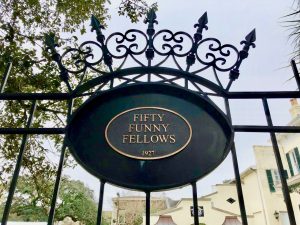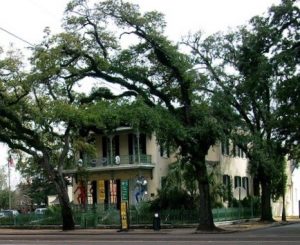Since the first post on November 14, 2009 Sharing Guy’s Journey has been intentionally characterized as “personal.” Indeed, as I write professionally about knowledge services, I’m careful to refer to any publications having to do with knowledge services, knowledge sharing, and knowledge strategy development as strictly “professional.” An example is SMR’s Knowledge Services Blog, intended for colleagues and students as we explore the management and leadership in the line of work we refer to as “knowledge services.” That blog continues (often the published script of my podcasts but also along with other professional writing when I have something “professional” to share).
Future posts for Sharing Guy’s Journey will now be accessed here, at guysblog.smr-knowledge.com. The new site will incorporate changes that will—I hope—take advantage of a better format and structure. Earlier posts for Sharing Guy’s Journey (that is, posts prior to March, 2018) will continue to be available at http://gstcjourney.blogspot.com. If we’re lucky, the new format will be easier to read and more accessible for regular readers.

As for the timing of the change, I’ve chosen to say a few more things about Mardi Gras in Mobile, Alabama. My fascination with Mardi Gras was pretty evident, I think, in the family stories I shared previously (Personal History: The St. Clair Family at Mobile’s Mardi Gras, posted on February 17, 2018). And our host mystic society was Fifty Funny Fellows, commemorated as shown here (along with other such societies) at the Mobile Carnival Museum, where we had such fun exploring the history of Mobile’s Mardi Gras.
Now I want to explore a little deeper, to see if I can come up with some ideas about why the whole concept of Mardi Gras and Carnival and all that goes into these celebrations—especially in a place as beautiful and friendly as Mobile—mean for us as individuals and as citizens, and not just as American citizens but in the larger scheme of things, as citizens in the larger global society.
And for anyone who knows me, there’s no surprise in my wanting to give some thought to this “larger scheme of things.” I teach about knowledge services, about building a knowledge strategy and giving attention to how knowledge services and knowledge strategy affect us in our in our personal lives. As it turns out, we tend to give most attention to the benefits and rewards of knowledge sharing in the workplace, in our professional lives and in the organizations in which we are employed. Some of the fields of work where knowledge services provides tangible and measurable benefits are easily recognized (healthcare, for example, or financial services, the legal profession, marketing and sales, technology, etc.). More important, though, we recognize that knowledge services has serious and beneficial applications also in the larger society, as in our work with sustainable development, climate change, water scarcity, food, dealing with natural disaster and/or terrorism, and the like).
And, probably as important as anything else we identify when we think about sharing knowledge, we find knowledge services applicable in our private lives, in our interactions with our loved ones, friends, neighbors, fellow volunteer workers, and all others who engage in civilized conversation in order to get things done. In these last, of course, any discussion or attention to knowledge services and the development of a knowledge strategy is more likely than not informal. But it doesn’t matter. What does come into play is that, however we discuss knowledge services and knowledge strategy development, the application is organization or activity agnostic. Most of us quite naturally tend to think of information management (including technology management), knowledge management, and strategic learning—the three elements that form the structure of knowledge services—as part of our business or professional experience and yet, whether we acknowledge it or not, knowledge services affects all that we do, in any capacity in our lives in which we engage in knowledge sharing (whether formally or informally).

All of which brings me to that massive knowledge-sharing effort represented by the successful interactions among all the people involved in “making Mardi Gras happen” in Mobile, not just in 2018, but over the last 160 years. What we experienced and observed over those couple of weeks (recognizing that the event lasts much longer, from Twelfth Night to the day before Ash Wednesday) gives us a splendid example of how people work together to make something—in this case something truly “big”—come about. Of course in Mobile’s Mardi Gras it’s all built around having fun—as I wrote about in the earlier essay—but it’s also about the commitment to get something done, to accomplish something that would benefit everyone who participated in the effort, no matter what rank in society they hold. Everyone involved was committed to what they know, to sharing what they could do with others who could benefit from what they knew. And in putting this enormous team together, they could all succeed in turning this massive planning-and-implemention Mardi Gras ship around. Not an easy task of course, but for the benefits that were going to be realized and have been realized over the years, there was no question about the commitment to move forward. And in Mobile, they do it year after year.

And it’s all been recorded and analyzed in a couple of remarkable texts I got to know when I was becoming familiar with Mobile’s Mardi Gras, and at the risk of repeating myself, I want to call attention to these fascinating books. The first is L. Craig Roberts’ Mardi Gras in Mobile, published just three years ago by History Press in Charleston, South Carolina. What I particularly like about Roberts’ work is the almost overwhelming thoroughness with which he gives his readers (and certainly any scholars of the whole body of literature about carnival and its universal appeal). Roberts begins with—not surprisingly—a neat condensation of the entire history of festivals, going back to the ancients, and an introduction he calls “The Early Roots of Mardi Gras.” He then works his way (“works” is hardly the correct term, since the story is so engaging and pleasing to read) through the entire story of what took place and now takes place in Mobile, including many interviews, serious scholarly research, and—especially satisfying—example after example of just good old-fashioned story telling. And the best? A closing chapter (“In Their Own Words”) in which participants in Mobile’s Mardi Gras bring to life many, many of their opinions, ideas, and general thoughts about this amazing event that takes place annually in their city.
The other book I found particularly interesting is The Art and Design of Mardi Gras, published in 2014 by the Mobile Museum of Art. This latter work is a collection of insightful essays from authoritative specialists at not only the Mobile Museum of Art but the History Museum of Mobile and the Mobile Carnival Museum. Lavishly illustrated (no surprise here, considering the wealth of collected archives and artifacts that must have been handed down throughout the 160-year history of Mobile’s Mardi Gras), this book is particularly notable for four very well-written and engaging essays, including an opening article describing “How It All Happened,” by journalist Steve Joyns, now the editor of Mobile Mask—The Reveler’s Guide to Mardi Gras, a website and magazine.

Cartledge Weeden Blackwell III is an author and architectural historian and the Curator of the Mobile Carnival Museum. His essay “Broken Columns, Pointed Arches, and Bawdy Bordellos: The Architectural Experience of Mardi Gras” intriguingly links together “the shared trajectory of the architecture of Mardi Gras and the architecture of the City of Mobile.” Seeing how Blackwell connects images first published as lithographs on newsprint paper is a fascinating story of how the growth of a city’s buildings and of the same city’s entertainment and local popular elements come together is a remarkable and well-told trip down a different kind of memory lane.
Scotty E. Kirkland is Curator of History at the History Museum of Mobile who teaches American History and writes on politics and race in twentieth-century Mobile. In “Community on Parade: The Mobile Area Mardi Gras Association’s Diamond Anniversary,” Kirkland provides in wonderful detail the history of what was originally the Colored Carnival Association (CCA, renamed MAMGA in the 1970s), now the society that organizes and sponsors major Mardi Gras events, including some thirty floats in the annual parade nicknamed the “Mammoth” parade. As Kirkland writes, “In 1938 members of three social clubs decided to form the organization,” and from then on, generations of Mobile’s African-American community (making up some 40 percent of the city’s population at that time) created their own traditions and events.
Karyn Kay Zweifel’s essay, “The Art of Mardi Gras,” was originally published in 2007 in Alabama Arts. The essay is particularly notable for—like Roberts’ quotations from Mardi Gras inhabitants who talk about their experiences with Carnival—describing how the many costumes, regalia, and other elements of the event pervade the city’s (and the area’s) attention: “When all the world is cold and gloomy,” Zweifel writes, “just turn your mind southward. The bright, boisterous energy of the Mardi Gras season lasts just a few weeks, but it’s a subject that consumes the Gulf Coast all year long.”
As I noted in my earlier post, these materials—along with many stories and conversations taking place during Carnival—provide a wealth of material. While I can’t ascribe any scholarly learning on my part, all of these resources have contributed to my taking on a fascinating perspective about “Mardi Gras,” “Carnival,” or whatever we want to call this particular experience in entertaining ourselves. And in doing so, in making sure that we all of us participating in Mardi Gras in Mobile are having a good time.
Leave a Reply